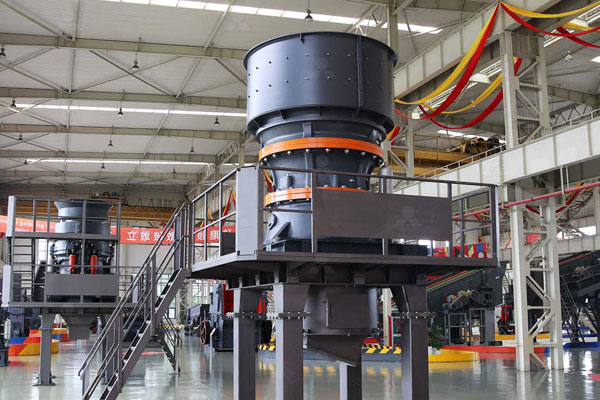Calcite cone crusher with a capacity of 1,000 tons
Cone crushers are essential in the mining and mineral processing industry, especially for mid-to-hard rock crushing. For calcite—a relatively soft mineral (Mohs hardness of 3)—the right cone crusher selection ensures high efficiency, low wear, and consistent product quality. This analysis explores the key features, performance, and suitability of a cone crusher optimized for processing 1,000 tons of calcite per hour.
1. Key Requirements for Calcite Crushing
Since calcite is soft and brittle, the ideal cone crusher should prioritize:
- High Throughput – Able to process 1,000 tons/hour.
- Adjustable Discharge Size – Ensuring fine to medium particle outputs for different applications.
- Low Energy Consumption – Minimizing operational costs.
- Durable Wear Parts – Even though calcite is soft, prolonged use still causes abrasion on mantles and concaves.

2. Recommended Cone Crusher Specifications
A HPT Multi-Cylinder Hydraulic Cone Crusher (or equivalent model) is suitable for this capacity. Its features include:
- Feeding Size: Up to 320mm (adjustable based on calcite feed size).
- Processing Capacity: 55–700 TPH (higher-end models or multiple units can achieve 1,000 TPH).
- Automatic Hydraulic System – Ensures stable performance, reduces downtime for adjustments.
- Multi-Crushing Chambers – Can be configured for fine or coarse output (5–40mm).
Supporting Equipment (for 1,000 TPH System)
- Vibrating Feeder – Ensures steady material flow into the crusher.
- Jaw Crusher (Primary Crushing) – If calcite chunks are too large (>320mm), a primary jaw crusher is necessary.
- Screening System – Closed-circuit design improves efficiency by recirculating oversized materials.
3. Advantages for Calcite Processing
- High Efficiency: Hydraulic adjustment and overload protection prevent blockages.
- Low Maintenance: Hardened liners reduce wear despite high throughput.
- Dust Control: Proper sealing minimizes fugitive dust, critical in calcite processing.
Potential Limitations
- Moisture Sensitivity: Wet calcite may cause clogging; pre-drying may be needed.
- Footprint: Large-capacity cone crushers require ample space and sturdy foundations.
4. Comparison with Other Crushers
| Feature | Cone Crusher (HPT) | Impact Crusher (PF) | Jaw Crusher (PE) |
|---|---|---|---|
| Best for | Medium-Fine Crushing | Coarse-Fine Crushing | Primary Coarse Crushing |
| Wear on Soft Material | Low (Adjustable Speed) | Medium (Impactor Blades Wear Faster) | Low (Cheek Plates) |
| Output Control | Excellent (Hydraulic Adjust) | Good (Blow Bars & Impact Adjust) | Limited (Fixed Jaw Settings) |
| Energy Use | Moderate-High | Moderate | High |
Conclusion: For high-tonnage calcite crushing, a multi-cylinder hydraulic cone crusher is optimal for balance between particle shape, efficiency, and maintenance.
A 1,000 TPH calcite cone crusher system should integrate:
✔ HPT Hydraulic Cone Crusher(s) (possible multiple units in parallel).
✔ Pre-screening & Feeding Controls to manage input size.
✔ Dust Suppression Systems for environmental compliance.
✔ Automated Monitoring (e.g., real-time wear tracking, pressure sensors).
For maximum uptime, pairing with a jaw crusher (primary) and vertical mill (tertiary, if ultra-fine powder is needed) creates a complete calcite processing line.
